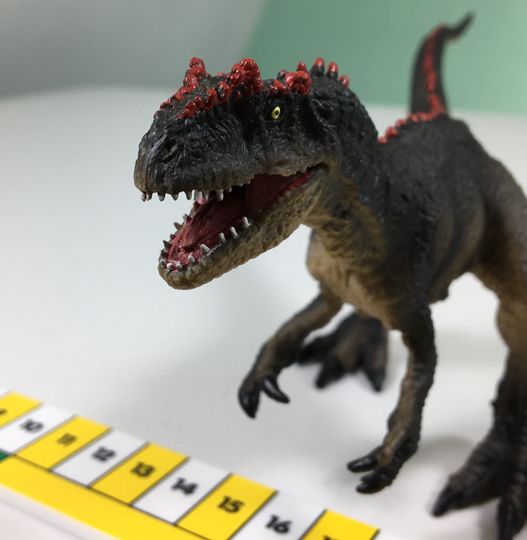Othniel Charles Marsh 1831 – 1899
On the 29th October 1831, Othniel Charles Marsh was born. He was destined to become one of the most influential and important palaeontologists of the 19th century.
Othniel Charles Marsh
Born in New York, Charles was educated at Yale and went onto study geology and mineralogy. Following this he travelled to Germany to study palaeontology. Returning to America, he was appointed professor of vertebrate palaeontology at Yale University (the first professor of palaeontology ever appointed in the United States), he went onto persuade his uncle, the wealthy entrepreneur and philanthropist, George Peabody, to establish a museum of natural history (Peabody Museum at Yale).
Marsh was one of the great pioneers of American palaeontology, leading a number of successful exhibitions to the west of the United States as the geology of this territory began to be opened up and fully explored. He described 19 different genera of dinosaur and competed fiercely with his rival Edward Drinker Cope to find the best specimens for the museums back in the east of the USA. Their rivalry became known as the “Bone Wars”. Marsh’s expeditions made a number of important discoveries, they unearthed the first American pterosaur fossils and Marsh went onto name and describe some of the most famous of all the dinosaurs Allosaurus, Apatosaurus and Diplodocus.
A Model of an Allosaurus
Picture credit: Everything Dinosaur
The Mojo Fun range of models and figures includes replicas of several prehistoric animals that were named and described by Othniel Charles Marsh: Mojo Fun Prehistoric and Extinct Animal Models.
A number of extinct species have been named in honour of this professor, for example the hypsilophodontid Othnielia (fossils found in Colorado, USA), was named after Othniel Charles Marsh.
Writing Scientific Papers
Marsh also devoted a great deal of his time to writing papers and attempting to find order amongst vertebrate evolution, describing a number of toothed birds and flying reptiles. One of his greatest contributions to science was his study of the evolution of horses, published as the Darwinian debate raged. Marsh’s paper outlining how horses evolved from small, many-toed browsers to fleet footed, large single-toed grazers was seen by many scientists of the day of evidence in support of Darwin’s theory of natural selection.
While travelling to the western USA in 1868, Marsh was told of a strange discovery of what was believed to be human bones in Nebraska. He was curious but doubted that the bones belonged to an ancient race of humans, however, he did ask to view them and quickly identified them (correctly), as ancient horse fossils. Marsh insisted on having the remains sent to him for further analysis. He determined that they had come from an animal from Pliocene times that was barely three feet tall and had long slender legs which ended with three toes on each foot. He dubbed the small horse Equus parvulus (now known as Protohippus).
In subsequent expeditions to the the western USA more fossils of horses were found, a mystery in itself as horses were not known in America until they were introduced by the Spanish.
Using the many different types of horse fossil found and relating each discovery to the age of the rocks from which the fossil was extracted, Marsh was able to build up a picture of the evolution of equines. In a paper published in 1874 in the scientific journal “American Naturalist”, Marsh describes some of the horse fossils he found on an expedition in Wyoming and Utah. One of these skeletons, he named Eohippus, or “the dawn horse.”
By studying the numbers of toes and different degrees of variation, especially the variations in the leg bones Marsh was able to set out a chronological order of horse development from the small browser Eohippus to the modern horse. Marsh determined the line of descent by examining the metacarpal bones (toe bones) of the different horses. He compared what he found to the legs of modern horses, and found remnants of digits IV and II along the cannon bones (this is more evident in the forefeet that hind).
The time scale shows the Palaeogene on the left right up to modern times with the domestic horse. Over millions of years the primitive horses gradually evolved into the larger, faster running animals we know today.
Darwin’s theory of natural selection operates on very small differences that exist between living things in a population. Any slight mutation or modification that an animal has may give it an advantage over its contemporaries. This animal is more likely to survive and pass on this trait to its offspring. As a result of heredity it is likely that these descendants will have the features of the parent and will therefore pass this feature on when they breed too. In this way, a mutation can become inherent in an entire population over time.
Support for Darwin’s theory was difficult to obtain as central to his argument was that these differences altered organisms over vast amounts of time. Marsh’s study of the evolution of the horse from a four-toed small browser into the single-toed animal we know today was evidence supporting Darwin’s theory.
Charles Darwin himself, although quite elderly, expressed a desire to travel to America to see Marsh and his collection at Yale. It was this work that helped popularise the theory of natural selection amongst New World scientists and it is for this ground-breaking study, as well as his work on the dinosaurs that Othniel Charles Marsh is best remembered.







Leave A Comment